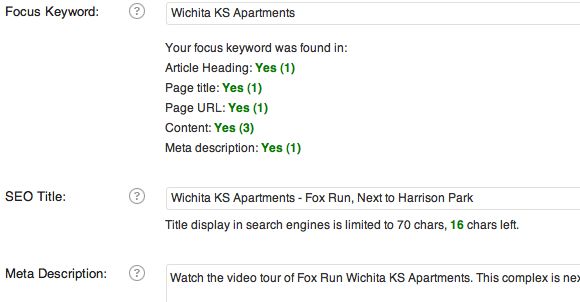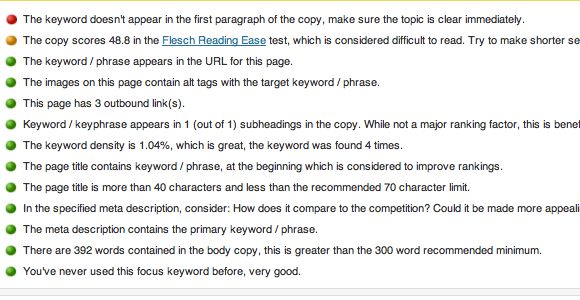The field of Search Engine Optimization has developed into Inbound Marketing. It is an extremely dynamic field that changes daily.
Inbound marketing can be intimidating because of the hundreds of different ranking factors involved, but fortunately there is one very important part of search engine optimization that you can master with a little help from our friend Yoast.
Before I found the “Wordpress SEO by Yoast” plugin, I used a software called “I Business Promoter” to do all of my onsite optimization.
I Business Promoter has the best onsite SEO tool I have found to-date, but it is so detailed that using it can be very inefficient.
IBP’s onsite optimization tool analyzes literally every ranking factor of a single keyword on a single page, then compares it with your top-ten competitors for that specific keyword. This is a very powerful and accurate tool, but it is also cumbersome. Every analysis generates a 50+ page report that you must then decipher into your own action steps.
WordPress SEO By Yoast is a much more seamless and efficient tool that will optimize a page at least 90% as good as IBP, but it can do it in a fraction of the time.
When optimizing a page using Yoast, there is a two-step process.
First, you must define a “focus keyword.” Then the Yoast plugin will then check to see if it is in all of the most important locations on the page. Once the keyword is in the correct location, Yoast will show a green “Yes” next to the satisfied element.

It is important that you use the exact keyword and no other variations. I have also noticed that you must click “save draft” if you change the URL, or the green “Yes” may not show.
Once you have placed your keyword in all of the correct locations, it is time to perform a page analysis.
The wonderful part of the page analysis is that it provides easy to follow directions in bullet-point form.
There are four-colors that are used to signify the level of optimization each factor has. Red is the worst, orange is second-worst, yellow is intermediate, and green stands for optimal.

In this case, the page that I was optimizing has a gravity form that belongs above the content, so it was not possible to satisfy this factor of the page analysis.
The Flesch reading score can be a challenge as well. IBP targets a score of 60 and above, but Yoast targets a score of 70 or higher. I don’t think I have ever seen a page with a Flesch score of 70, so I would shoot for 60 on your most important content.
It can take a lot of time to re-write an article until you achieve a Flesch score of 60 or higher, so only do this on the most important pages, or you will end up spending a lot of time to produce very little results.
If you are able to place the keyword in all 5 of the elements that Yoast assesses, then turn all dots green on your page analysis, then you will have a pristinely optimized page that Google will love.
Now that you have a real-time cheat sheet of onsite optimization, it is time to get in to the real challenging stuff. Have fun and good luck with your newfound onsite optimization guide!
Article by Mike Gamache CEO of Fleetfoot Marketing, which provides Real Estate Video Tours and Inbound Marketing Services.

